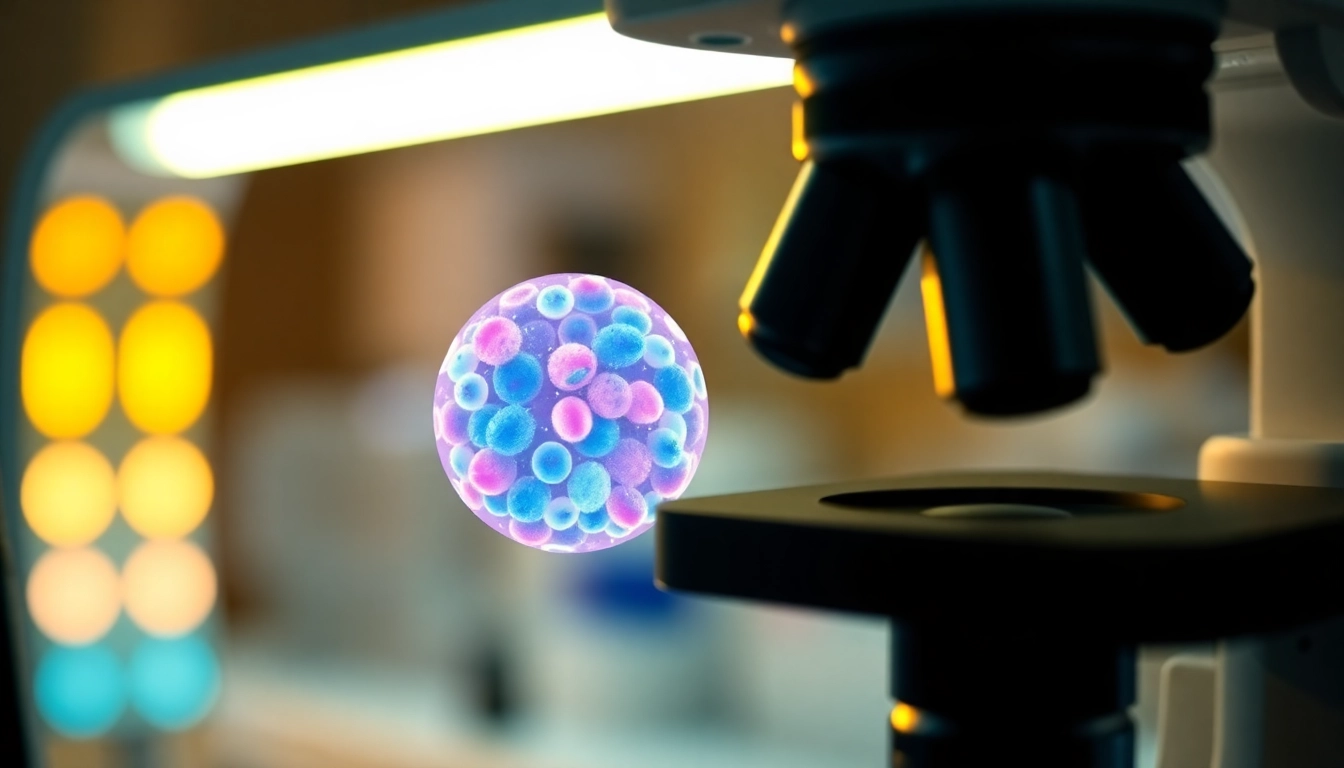Introduction to TeSR™ Media and Its Significance
The field of stem cell research has undergone significant advancements, especially with the development of Feeder-Free Pluripotent Stem Cell (PSC) culture media. One notable player in this domain is the TeSR™ media family, developed to optimize the maintenance and differentiation of human embryonic stem cells (ES) and induced pluripotent stem cells (iPS). These media were meticulously refined to eliminate the need for animal-derived feeder layers, greatly enhancing safety and reproducibility in research applications. The all check standard established by TeSR media has become synonymous with high-quality PSC culture, paving the way for innovations in cell therapy and regenerative medicine.
Understanding Pluripotent Stem Cells (PSCs)
Pluripotent stem cells (PSCs) hold the remarkable ability to differentiate into any cell type in the body, making them invaluable for scientific research and potential therapeutic applications. PSCs can be derived from human embryos (embryonic stem cells) or generated from somatic cells through a process known as reprogramming (induced pluripotent stem cells). Their versatility allows researchers to explore fundamental biological processes, model diseases, and develop novel treatments.
The Role of Feeder-Free Media in Cell Culture
Traditionally, PSCs were cultured on feeder layers made up of mouse embryonic fibroblasts, introducing variability and potential contamination. Feeder-free media like TeSR™ facilitate the culture of PSCs in a controlled environment devoid of xeno-derived components. This method not only promotes consistent growth and pluripotency but also aligns with regulatory standards, essential for clinical applications.
Advantages of Using TeSR™ Media
The TeSR™ media family boasts several advantages, including:
- Enhanced Cell Viability: TeSR™ media promote robust cell growth and pluripotency, ensuring high viability rates.
- Reproducibility: The batch-to-batch consistency offered by TeSR™ media reduces experimental variation.
- Flexibility in Applications: From reprogramming to differentiation and maintenance, TeSR™ media cater to diverse research needs.
- Regulatory Compliance: Products are developed under current Good Manufacturing Practices (cGMP), enhancing their safety profile for clinical applications.
Overview of Various TeSR™ Products
Key Features of mTeSR™ Plus
mTeSR™ Plus represents a significant advancement in feeder-free media, designed to support the growth and maintenance of hPSCs for extended periods without media change. Key features include:
- Stable Formulation: Enhanced buffering capacity helps to prevent medium acidification, preserving cell quality over time.
- Flexible Usage: Suitable for weekend-free schedules, providing convenience for researchers.
- High Reproducibility: Maintains consistent performance across different research labs.
Exploring TeSR™-E8™ and Its Applications
TeSR™-E8™ is a low-protein maintenance medium that simplifies the culture of pluripotent stem cells. Its streamlined composition includes only the essential components required for effective cell maintenance. Applications in which TeSR™-E8™ can be used include:
- Long-term culture of human PSCs.
- High-density cell expansion for large-scale applications.
- Feeder-free derivation of new iPS cell lines.
Comparative Analysis of Different TeSR™ Media
Each product within the TeSR™ family serves specific needs. The following table provides an overview of key TeSR™ media products and their differentiating features:
| Media Type | Formulation | Key Benefits |
|---|---|---|
| mTeSR™1 | Standard feeder-free media | Widely used, robust growth of hPSCs |
| mTeSR™ Plus | Enhanced formulation with increased buffering | Supports weekend-free culture with high consistency |
| TeSR™-E8™ | Low-protein media with essential components | Simplified formulation for sustained growth |
| TeSR™-AOF | Animal origin-free media | Low risk of contamination, suitable for clinical applications |
| hPSC Cryopreservation Media | Designed for freezing hPSCs | Maintains viability post-thaw for clinical use |
Best Practices for Maintaining hPSC Cultures
Optimizing Culture Conditions
Culturing hPSCs requires optimal environmental conditions. Key considerations include:
- Temperature control: Maintaining a consistent temperature of 37°C is critical.
- Oxygen concentration: Most hPSCs thrive in a 5% CO2 atmosphere with balanced oxygen levels.
- Subculturing: Regular passaging prevents over-confluence, which can compromise cell health.
Common Challenges and Solutions
Researchers may encounter challenges while working with hPSCs. Common issues include:
- Cell differentiation: This can be mitigated by ensuring optimal media conditions and regular monitoring.
- Contamination risks: Strict aseptic techniques and the use of sterile equipment are essential.
- Variability in cell lines: Utilizing the TeSR™ media family can minimize discrepancies between experiments, ensuring reproducibility.
Monitoring Cell Health and Quality
Maintaining hPSC quality involves careful monitoring of several parameters, including:
- Cell morphology: Regular visualization under a microscope helps assess health.
- Pluripotency markers: Characterization through flow cytometry can confirm cell status.
- Genomic stability: Periodic genomic integrity assessments are essential for long-term cultures.
Efficient Differentiation using TeSR™ Media
Protocols for Efficient Differentiation
Protocols for differentiation often require tailored media formulations. The following are some key protocols for various cell types:
- Hematopoietic Cells: Utilizing TeSR™ media combined with specific growth factors can lead to successful hematopoietic differentiation.
- Definitive Endoderm: Adopting specific cytokine protocols during differentiation can optimize yield and efficiency.
- Cardiomyocytes: Using optimized media that facilitate cardiogenic differentiation enhances cell yield and function.
Key Factors Influencing Outcomes
Several factors can influence the outcomes of differentiation:
- Choice of differentiation factors: The selection of growth factors and cytokines is critical in guiding stem cell fate.
- Time of exposure: The duration for which cells are treated with differentiation factors can affect maturity and functionality.
- Culture geometry: Using advanced culture systems like 3D scaffolds can improve differentiation outcomes.
Case Studies of Successful Differentiation
Numerous studies demonstrate the effectiveness of TeSR™ media in differentiating hPSCs:
- Research by Dr. Joseph C. Wu showcased successful differentiation into hematopoietic cells, highlighting the media’s role in enhancing yield and quality.
- Dr. Andrew Elefanty’s work emphasizes the efficiency of TeSR™ media in generating definitive endoderm from hPSCs, clarifying the advantages of tailored cytokine profiles.
- Cardiomyocyte differentiation, as detailed by Dr. Robert Zweigerdt, showcased how TeSR™ media can facilitate maturation into fully functional cardiac cells.
Future Directions in Stem Cell Research
Innovations in Pluripotent Stem Cell Technologies
The landscape of stem cell research is constantly evolving, with several innovations on the horizon:
- Use of artificial intelligence and machine learning to optimize differentiation protocols.
- Advancements in bioreactor technology to scale up stem cell production for therapeutic applications.
- Exploration of organ-on-a-chip technologies for more physiologically relevant disease modeling.
Regulatory Considerations and Compliance
As stem cell research progresses toward clinical applications, adhering to regulatory frameworks is crucial. The TeSR™ media family complies with cGMP, which is vital for ensuring:
- Safety in cell-based therapies and regenerative medicine applications.
- Consistency in manufacturing processes to meet industry standards.
- Transparent documentation processes for clinical trials and regulatory submissions.
Collaboration Opportunities in Stem Cell Research
Collaborative efforts can drive innovations forward:
- Partnerships between academia and industry are essential for technology transfer and commercialization.
- International collaborations can enhance resource-sharing, with researchers contributing to a collective knowledge base.
- Joint initiatives focused on ethical practices in stem cell research can establish guidelines for responsible use.



